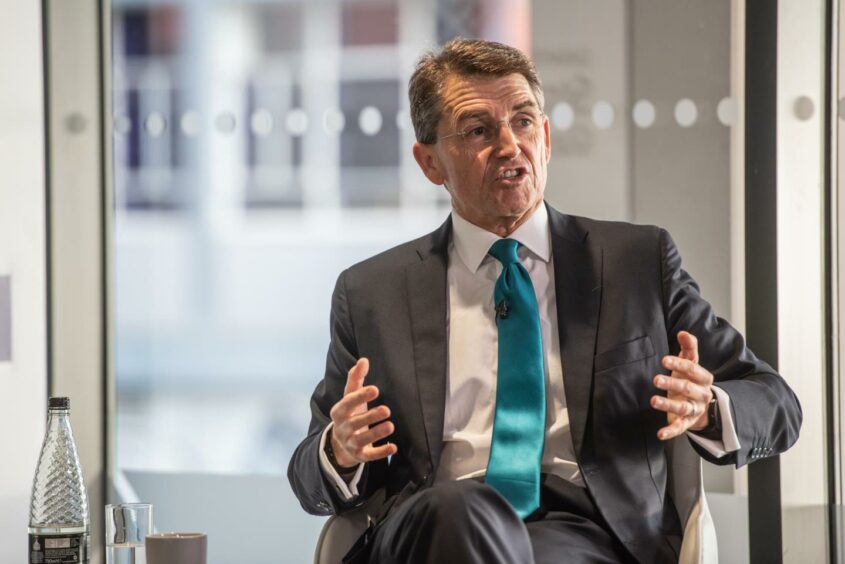
Speaking with Energy Voice, INEOS’ Brian Gilvary pressed the importance of the Scottish Cluster, and why the UK needs clear frameworks to encourage hydrogen investment.
Being in the business of both energy and chemicals, INEOS is clear about both the challenges and opportunities presented by the global move towards net zero.
In recent weeks the company has announced a 2 billion euro (£1.7 billion) pan-European investment plan in hydrogen, as well as a £1 billion plan to carry its Grangemouth refinery to net zero by 2045.
However, INEOS’ plans are closely linked with those of the Scottish Cluster project and the Acorn carbon capture and hydrogen scheme which was passed over for ‘Track 1’ government funding.
Speaking to Energy Voice on the sidelines of a roundtable event at the University of Strathclyde in Glasgow last week, INEOS Energy executive chairman Brian Gilvary called Acorn an “extraordinarily important project for Scotland and the future of the oil and gas industry.”
Given that importance, he remained optimistic about prospects for the project. “Acorn is important as a cornerstone. If it were not to proceed, it’s not clear to me how you would get to net zero by 2050.
“There will be a need for a project the size of Acorn to proceed and I’d be optimistic that it will get approved and get support – but it’s pretty important, otherwise I don’t see how you get to net zero.”
Mr Gilvary said that INEOS was still working through the implications of the government decision with the cluster consortium, but reaffirmed that there was nothing at present to signal a change of direction in its wider plans.
Investment framework
Roundtable discussions also focused on the role of hydrogen in the future energy mix.
INEOS has set out plans to develop ‘green hydrogen’ projects – using electrolysis and renewable energy – in Belgium and France, as well as the UK, which will also host the headquarters of its new hydrogen-focused unit.
However, Mr Gilvary said greater policy certainty from government was required to ensure those investments can be made: “If the investment framework is in place then investment tends to follow it. Germany is very advanced, Norway is advanced, Scandinavia generally is advanced, but I think as Jim [Ratcliffe] said this week, the UK hasn’t quite got out the traps yet.
“If you look at what’s happened inside Germany – tax incentives, fiscal incentives that you need to create those investments… We’d encourage the UK government as part of its integrated to plan to think about how you go about doing that.”
But, he said, experience in Europe would help the company develop business and technology models for when those frameworks are apparent: “We’ll invest the 2 billion euros, we’ll learn a lot about the technologies that we deploy and how we scale up – a big part of this is scaling up manufacturing of green hydrogen – and they will be deployable in economies that provide the incentives to put those in place.”
North Sea plans
In terms of its oil and gas assets, Mr Gilvary said INEOS would continue to look at consolidation options in the UK, following strategic moves earlier in the year. These included an exit from Norway and the acquisition of around £110 million of assets in Denmark from Hess.
“Denmark was a strategic fix creating an oil production profile that could grow with two or three projects that flow off the back of that – Syd Arne phase 4, South Arne project, Solsort and Hejre,” he continued.
“I think the next place for us to look is the UK and we’ll continue to look at consolidation options in terms of how we can grow our UK business,” though he declined to mention any specific targets.
In the meantime, he remained optimistic about the future of the industry in the UK North Sea, its trajectory towards net zero, and the company’s role in supporting that transition.
“In 2045, I think we will still have a thriving, important oil and gas sector in the North Sea. We’ll have to, otherwise we won’t be able to meet the energy requirements of the UK,” he told the roundtable session.
Recommended for you
